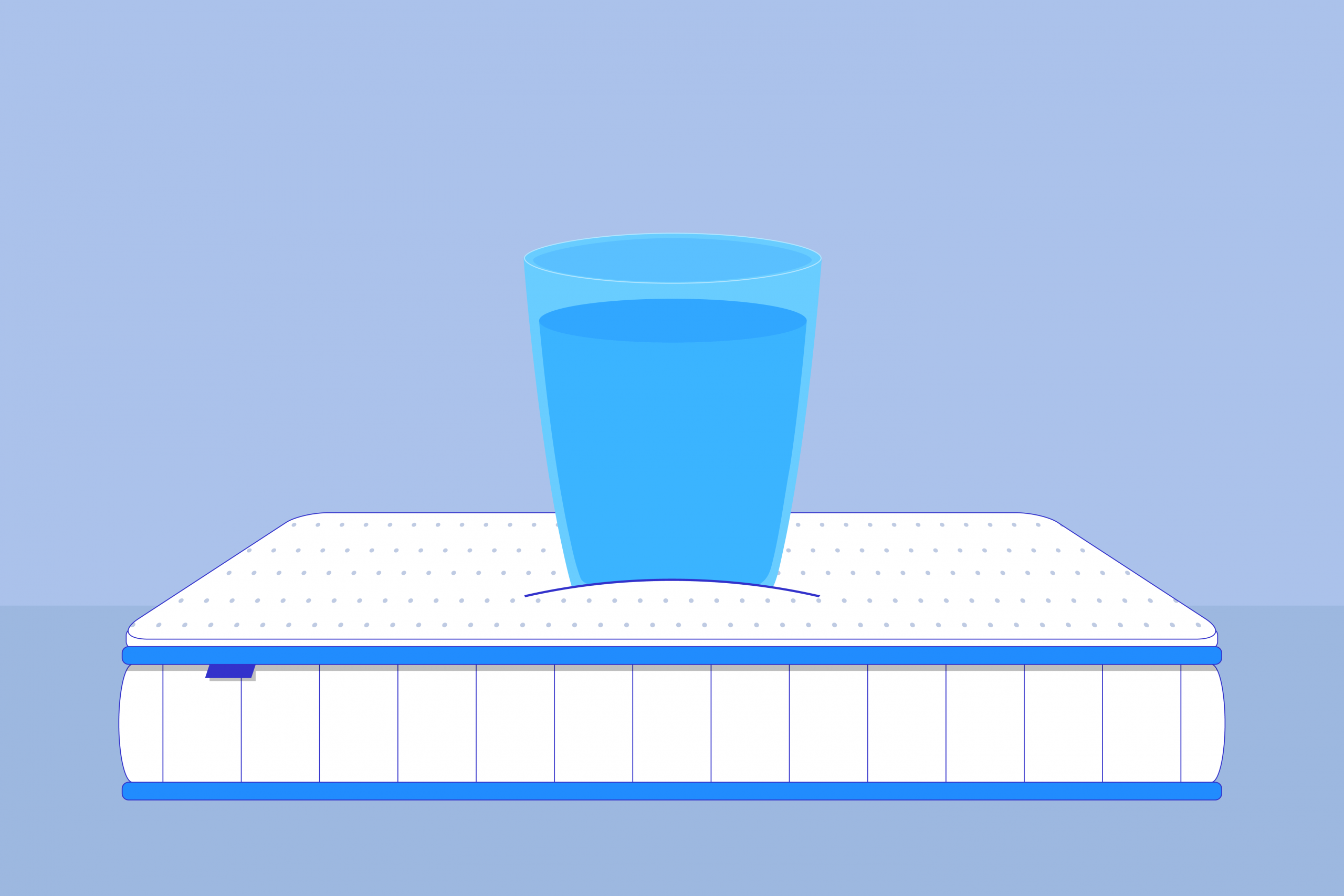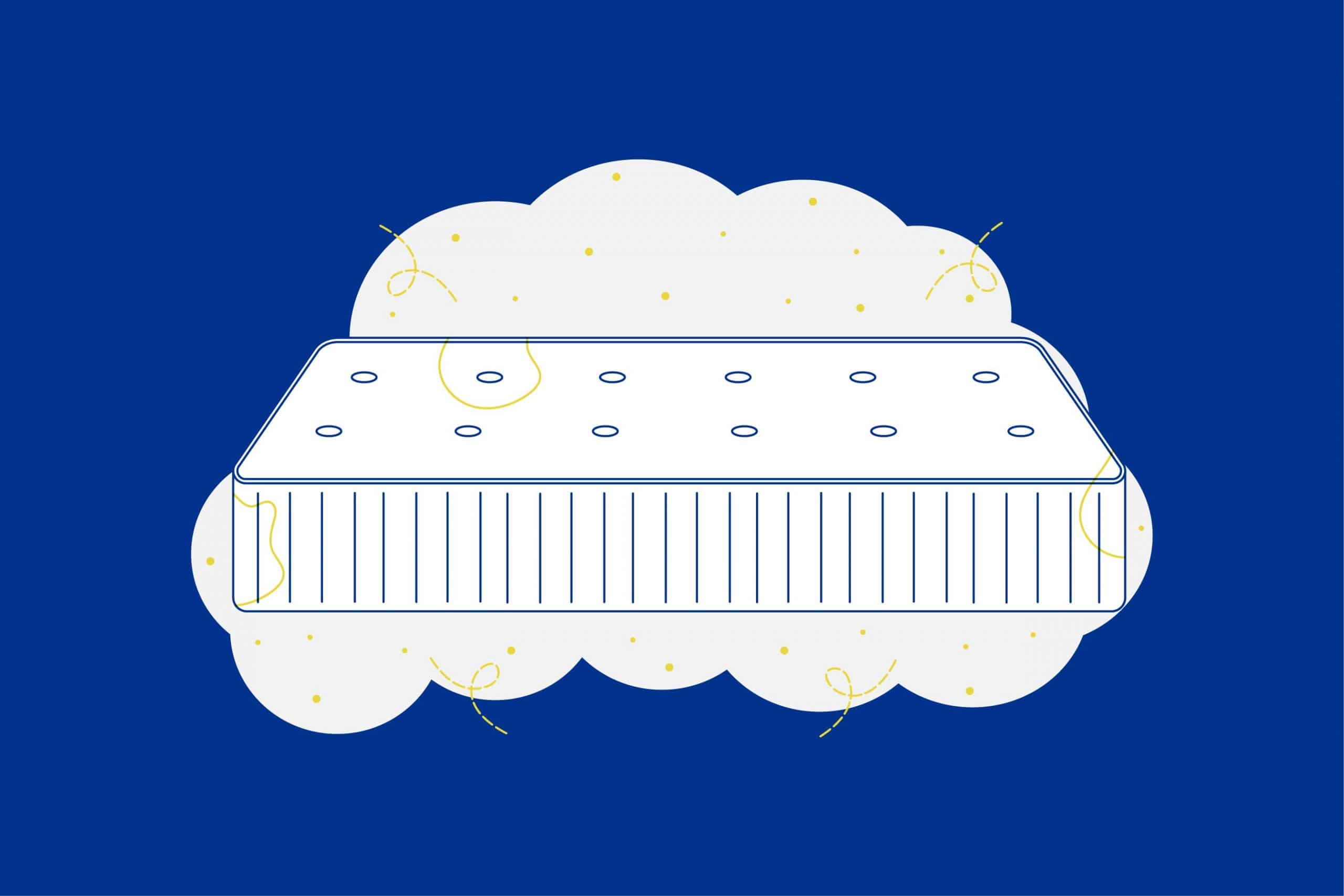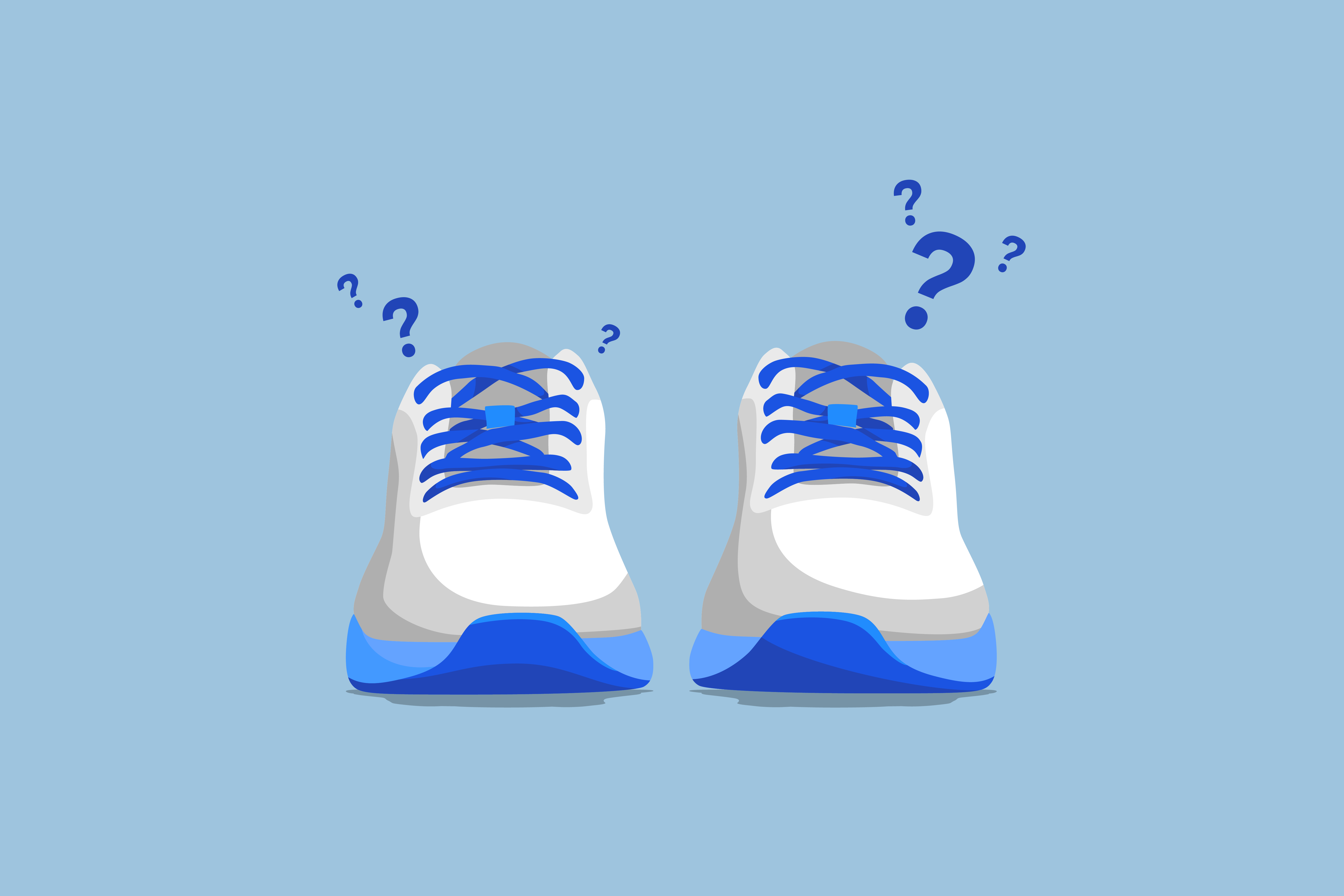Key Takeaways
- Impact on Sleep Quality: Poor motion isolation can lead to disturbed sleep, especially for light sleepers sharing a bed. Choosing a mattress with excellent motion isolation can significantly improve sleep quality by minimizing the transfer of movement across the bed’s surface.
- Mattress Material Matters: Memory foam and latex mattresses are known for their superior motion isolation capabilities due to their ability to absorb and dampen movement. Hybrid mattresses with individually wrapped coils can also provide effective motion isolation while offering the bounce of innerspring mattresses.
- Consider Bed Size and Accessories: Opting for a larger mattress, such as a king size, can help reduce motion transfer by providing more space for each sleeper. Additionally, using separate blankets or sleeping in separate beds can further minimize disturbances caused by a partner’s movements during the night.
Sharing a bed can be challenging when your partner’s movements disturb your sleep. If you find yourself jolting awake every time your bedmate shifts, twitches, or gets up during the night, it’s not because they’re trying to annoy you.
The real culprit is likely your mattress, specifically its poor motion isolation. This means that movement easily travels from one side of the bed to the other, causing you to feel every twist and turn.
The easiest way to improve your sleep is to get a new mattress, but it’s not the only potential solution. However, it is the first one we would recommend considering, as other methods often can’t match the effectiveness of a well-made mattress.
Quick Guide: A 30-Second Summary
| Best Mattress for Motion Isolation | Amerisleep AS3 |
| Best Topper for Motion Isolation | Amerisleep Lift |
What Is Motion Isolation?
Picture this: you’re snuggled up in bed, drifting off into dreamland, when suddenly your partner shifts positions or gets up to use the bathroom. The next thing you know, you’re rudely awakened by the bed shaking and trembling like a leaf in a windstorm. Sound familiar? If so, you’ve experienced the joy of motion transfer.
Motion transfer is the nemesis of light sleepers everywhere. It’s what happens when movement on one side of the bed travels across the mattress, disturbing the person on the other side.
Whether it’s your partner tossing and turning, your kid jumping on the bed, or your dog deciding to join you in the middle of the night, motion transfer can turn your peaceful slumber into a restless nightmare.
Conversely, a mattress with good motion isolation can be the hero of the story. Motion isolation refers to a mattress’s ability to absorb and minimize movement, preventing it from transferring across the bed’s surface.
A motion-isolating mattress is like a steadfast friend who keeps your secrets safe. It takes in all the movement and energy from one side of the bed and keeps it locked away, ensuring that your partner’s nocturnal acrobatics don’t disturb your beauty sleep.
It’s like having a miniature black hole in your mattress, sucking up all the motion and leaving you blissfully unaware. When you’re not constantly jostled awake by your partner’s movements, you’re more likely to get the deep, restful sleep your body needs to recharge and refresh.
But motion isolation isn’t just about getting enough shut-eye. It’s also about maintaining harmony in your relationship. When one partner’s sleep is consistently disrupted by the other’s movements, it can lead to resentment, frustration, and even arguments.
Choosing the Right Type
If you’re looking for a mattress that excels at minimizing motion transfer, the material it’s made from matters. Certain mattress materials are more effective at isolating movement and minimizing sleep disturbances.
Latex Mattresses
Latex mattresses offer moderate levels of motion isolation. Although the softer comfort layers can reduce surface-level movement, latex’s inherent bounciness may still permit some motion transfer when sleepers move or change positions. However, latex cores often provide better edge support compared to polyfoam cores.
Air Mattresses
Airbeds can vary in their motion isolation capabilities. Mattresses with a shared air chamber for two sleepers may have more motion transfer, while those with individual air chambers typically perform better. Thicker comfort layers may also help absorb more movement.
Innerspring Mattresses
Innerspring mattresses, known for their interconnected coil design, are often considered among the worst options for motion isolation. The interconnected coils move in unison under pressure, causing even small movements to create a ripple effect across the mattress surface. Minimal comfort layers and weight differences between sleepers can further amplify motion transfer.
Hybrid Mattresses
Hybrid mattresses, which combine a coil support core with a thick comfort system made from various materials, can offer varying levels of motion isolation. Individually encased pocketed coils compress separately and perform better at motion isolation than traditional interconnected coils, while foam or latex comfort layers can further help mitigate motion transfer.
All-Foam Mattresses
All-foam mattresses generally offer the best motion isolation among all mattress types. The dense foam core absorbs movement rather than transferring it to the surrounding areas, even when compressed. However, foam mattresses often have poor edge support.
Invest in a Larger Mattress
It’s not just mattress materials that affect whether or not you feel your partner. The size of your mattress can also impact motion transfer.
If you and your partner are sharing a smaller mattress, such as a full or queen size, you may be more likely to feel each other’s movements throughout the night.
Upgrading to a larger mattress, like a king or California king, can provide more space for each person to move without disturbing the other. The extra room allows you to maintain a comfortable distance from your partner, reducing the likelihood of motion transfer.
When choosing a larger mattress for couples, ensure it still offers good motion isolation properties, such as memory foam or individually wrapped coils, to maximize the benefits of the increased space.
Check Your Foundation
Your bed frame works alongside your mattress to provide a stable, even surface that distributes weight and minimizes movement. However, a squeaky frame might be the culprit, shifting under the combined weight of you and your mattress.
The type of mattress foundation you choose can significantly impact motion transfer. Traditional box springs with interconnected coils can amplify movement, while platform beds, adjustable frames and slatted bases absorb and minimize motion.
Get a Mattress Topper
If buying a new mattress is not feasible, a mattress topper can be a cost-effective solution to enhance your bed’s motion isolation.
However, it’s important to select the right topper for your needs. Mainly, consider the type of mattress you currently have.
If you’re sleeping on a foam mattress, a memory foam or latex topper can be a great choice to further enhance motion isolation. For those with innerspring mattresses, a foam topper or one featuring pocketed coils can help minimize motion transfer.
Also, look for a thick topper, one at least three inches tall, as anything thinner may not provide the necessary support and motion absorption.
Get Separate Beds
If your partner’s movements are severely disrupting your sleep, one effective solution is to sleep in separate beds. While it may seem unconventional, sleeping apart Verified Source National Library of Medicine (NIH) World’s largest medical library, making biomedical data and information more accessible. View source in separate beds can completely eliminate the impact of your partner’s movements on your sleep.
If you’re concerned about maintaining intimacy while sleeping separately, there are solutions that allow for both motion isolation and closeness. Perhaps the most popular solution is to get a king-size bed frame and put two twin XL mattresses side by side.
This way, you’ll have zero motion transfer as the beds are entirely separate from each other. You can even choose different mattress types or firmness levels if you have contrasting preferences.
Don’t like the gap between the mattresses? You can use a mattress bridge or wedge to bridge it.
Use Separate Blankets
Don’t want the expense of separate beds? Sleeping with separate blankets may provide a similar effect.
When you share a blanket with your partner, their movements can easily transfer through the fabric, causing disturbances. By using separate blankets, you can create a barrier between you and your partner’s movements. This allows each person to move more freely without directly impacting the other.
Separate blankets also have the added benefit of allowing each partner to choose their preferred level of warmth and weight, ensuring a more comfortable sleep experience for both individuals.
Destress to Minimize Sleep Movements
While external factors like your mattress and foundation play a significant role in motion transfer, your internal state can also contribute to sleep disturbances.
Stress and anxiety can lead to restless sleep, causing you to toss and turn more frequently throughout the night and making it easier for sleep interruptions to pull you awake.
To minimize sleep movements caused by stress, incorporate stress-reducing activities into your bedtime routine. Some effective strategies include:
- Gentle stretching: Light physical activity can help release tension in your body and promote a sense of relaxation. You can even perform some stretches in bed!
- Journaling: Writing down your thoughts, worries, or experiences from the day can help clear your mind and process any lingering stress. By putting your concerns on paper, you can release them from your mind. This is how journaling before bed can make it easier to relax and fall asleep.
- Deep breathing exercises: Taking a few minutes to focus on your breath and calm your mind can help you relax and prepare for sleep. Box breathing is one pattern to try for relaxation.
- Avoiding screens before bed: The blue light emitted by electronic devices can interfere with your body’s natural sleep-wake cycle, making it harder to fall asleep and increasing the likelihood of restless sleep.
Communicate with Your Partner
Finally, it’s essential to communicate with your partner about your sleep needs and concerns. If you’re being disturbed by their movements during the night, have an open and honest conversation about how it’s affecting your sleep.
Work together to find solutions that benefit both of you. This may involve compromising on mattress firmness, agreeing to use separate blankets, or establishing a bedtime routine that minimizes disruptions.
By fostering open communication and a willingness to find solutions together, you can create a sleep environment that promotes restful, undisturbed sleep for both you and your partner.
Testing Mattresses
When shopping for a new mattress, it’s crucial to assess its motion isolation capabilities to ensure a peaceful night’s sleep for you and your partner.
While materials and construction can give you an idea of how well a mattress might perform, testing a mattress is the best way to determine its true motion isolation abilities.
In-Store Testing
When visiting a mattress store, take advantage of the opportunity to test the mattresses physically. Bring your partner along and have them lie on one side of the mattress while you lie on the other. Take turns moving around, shifting positions, and getting in and out of bed.
Pay attention to how much movement you feel from your partner’s side of the bed. A mattress with good motion isolation will minimize the transfer of movement, allowing you to rest undisturbed.
Another simple test is to place a glass of water on one side of the mattress and have your partner move around on the other side. If the water stays relatively still, it indicates that the mattress is effectively absorbing and isolating motion. However, you can use other objects and observe how they do or do not shift around.
You can also use a smartphone app or a smartwatch with a built-in accelerometer to measure the amount of movement you experience while your partner shifts positions. Place the device on your side of the bed and have your partner move around. The app or watch will provide data on the intensity of movement detected, giving you a quantifiable measure of the mattress’s motion isolation capabilities.
At-Home Testing
Many mattress companies offer generous trial periods, allowing you to sleep on the mattress for an extended time before deciding to keep it. Take advantage of these trial periods to thoroughly test the mattress’s motion isolation in your own home.
Trying a mattress after buying it means taking at least a few weeks to get a true sense of how well it minimizes motion transfer under real-world conditions.
Repeat the same exercises you would do in a store, with your partner moving on one side of the bed while you gauge the amount of motion transfer on the other side.
Also, keep a sleep journal during the trial period, noting any instances where your partner’s movements disturb your sleep. If you find that you’re consistently waking up due to motion transfer, it may be a sign that the mattress isn’t providing the level of motion isolation you need.
FAQs
What mattress has the least motion transfer?
Memory foam and latex mattresses generally have the least motion transfer due to their ability to absorb and isolate movement. These materials contour to the body and prevent motion from rippling across the surface of the mattress. Hybrid mattresses with individually pocketed coils can also minimize motion transfer, as the coils are not connected and can compress independently.
Will a mattress topper stop motion transfer?
A mattress topper can help reduce motion transfer, but it will not completely eliminate it. The effectiveness of a mattress topper in reducing motion transfer depends on its thickness, density, and material. Look for materials like memory foam or latex, and ensure the topper is at least 2 to 3 inches thick.
What causes motion transfer in a mattress?
Motion transfer in a mattress occurs when the materials used in its construction are unable to absorb and isolate movement. Traditional innerspring mattresses with connected coils are more prone to motion transfer because the coils are linked together, causing movement to travel across the surface.
Mattresses with low-density foams or those that lack adequate support layers may also allow more motion transfer.
Does memory foam prevent motion transfer?
Memory foam is one of the best materials for preventing motion transfer in a mattress. Its viscoelastic properties allow it to absorb and isolate movement, preventing it from traveling across the surface of the mattress.
However, the effectiveness of memory foam in reducing motion transfer can vary depending on its density and the overall construction of the mattress.
Does a split king bed stop motion transfer?
A split king bed, which consists of two separate twin XL mattresses placed side by side, can significantly reduce motion transfer between sleeping partners. Because the mattresses are not connected, movement on one side of the bed is less likely to be felt on the other side.
However, some motion transfer may still occur through the bed frame or foundation, depending on its construction.
How can I tell if a mattress has good motion isolation?
You can try a simple test by placing a glass of water on one side of the mattress and then having someone sit or lie down on the other side. If the water in the glass remains relatively still, it indicates that the mattress effectively absorbs and isolates motion, preventing it from transferring across the surface.
Before buying a mattress, you should try reading customer reviews and looking for mentions of motion isolation to see what people thought. Additionally, be smart about what type of mattress you pick. Materials like memory foam, latex, or individually wrapped coils are known for absorbing movement and minimizing transfer.
How do I know if I need a mattress with motion isolation?
If you’re easily disturbed by your partner’s movements during the night, a motion-isolating mattress can be helpful. Furthermore, if you or your partner have different sleep schedules or frequently get in and out of bed, minimizing motion transfer can help you both get a more restful night’s sleep.
Even if you don’t share the bed, you might benefit from mattress motion isolation if you’re a light sleeper who wakes up at the slightest disturbance. It’s possible for your own movements to jostle yourself out of sleep.
Can a mattress with good motion isolation still be bouncy?
While mattresses with good motion isolation tend to have less bounce, it’s still possible to find a mattress that offers both.
If you enjoy a bit of bounce in your mattress but still want to minimize motion transfer, try a hybrid mattress with the right materials. Latex foam tends to be the bounciest accompaniment, but a memory foam mattress can still feel quite buoyant.
Conclusion
Selecting a mattress with good motion isolation is essential for a restful, undisturbed night’s sleep. By understanding the factors that contribute to motion isolation, such as mattress materials and construction, you can make an informed decision when selecting your next bed.
Choosing an all-foam mattress, a hybrid with individually wrapped coils, or a mattress topper that prioritizes motion isolation can improve sleep quality for you and your partner. These can help you and your partner sleep better, even if one of you tends to move around more during the night.
Keep in mind other important factors, too, like mattress edge support and temperature regulation.
About the author
Geoff McKinnen is a writer focusing mainly on the healthcare industry and has written articles on everything from foods to help you lose weight to the connection between Alzheimer’s and sleep. Geoff’s passionate about helping readers improve their well-being to lead happier lives. Outside of work, Geoff enjoys cycling and hiking and believes that by leading a healthy lifestyle, he can help others do the same.
View all posts





